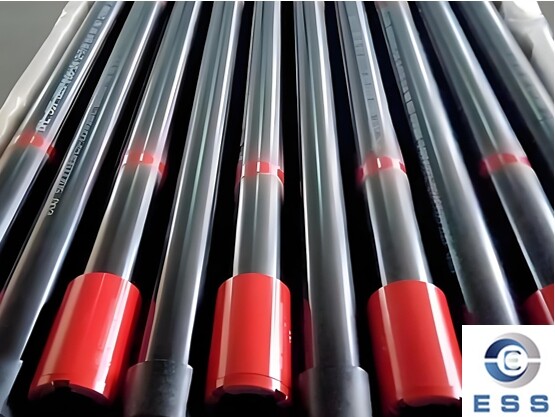
In industrial pipeline systems, pup joints,
as an OCTG pipe,
are key connecting components that play the role of connection, transmission
and bearing. However, due to the harsh working environment and long-term use,
pup joints are prone to various problems. This article will introduce five
common pup joint problems and their troubleshooting methods in detail to help
everyone find problems in time and take effective measures to ensure the stable
operation of the system.
Installation problems
During the installation process of the pup
joint, if the operation is improper, it is easy to have loose connections or
leakage problems, which will affect the safety of the overall pipeline system.
1. Causes
Improper use of tools, installation process
defects, thread damage, etc.
2. Troubleshooting methods
Check the tightness of the connection:
Regularly check the connection between the pup joint and the pipeline to ensure
that the fasteners are firm and not loose.
Compare thread standards: Verify whether
the installed pup joint threads meet the relevant standards and ensure that the
threads are intact.
On-site testing: Perform pressure testing
or leak detection to determine whether there are defects in the installation.
Material defect problem
Due to material problems, the pup joint may
show insufficient strength or premature aging, reducing service life and
causing safety hazards.
1. Cause
Poor quality of raw materials and
substandard manufacturing process.
2. Troubleshooting method
Material composition detection: Ensure that
the materials used in the pup joint meet the requirements through chemical
analysis and spectral detection.
Hardness and corrosion resistance test:
Perform hardness test and corrosion resistance evaluation on the pup joint to
verify whether the material performance meets the design standards.
Seal failure problem
Aging or damage of the seal will cause
leakage problems, affecting the normal operation of the pup joint under high
pressure environment.
1. Cause: Environmental factors, long-term
use or unqualified sealing materials.
2. Troubleshooting method
Visual inspection of the sealing surface:
Regularly check whether there are cracks, deformation or shedding in the
sealing part.
Sealing performance test: Use a pressure
tester to test the sealing performance to determine whether the seal needs to
be replaced.
Thread wear problem
Under long-term high-load working
conditions, the pup joint is prone to thread wear, gradually weakening the
structural strength, and even causing breakage or leakage.
1. Causes
The design does not fully consider the
stress concentration area due to high pressure, high temperature, vibration and
other working conditions, and the thread processing accuracy is insufficient,
resulting in excessive local stress.
2. Troubleshooting methods
Regularly monitor thread wear: evaluate the
degree of thread wear through regular inspection, and replace or repair the pup
joint with severe wear in time.
Body cracks/stress corrosion
Body cracks or stress corrosion usually
occur in areas where the pup joint is subjected to high loads and corrosive
media. Initially, it may be only a small crack, but if it is not discovered and
treated in time, it may gradually expand, resulting in overall fracture or
serious leakage.
1. Causes
Stress concentration under long-term high
pressure, corrosive media erosion of the material surface, design or
manufacturing defects leading to excessive local stress.
2. Troubleshooting methods
Non-destructive testing: Use ultrasonic
testing, X-ray testing or magnetic particle testing and other technologies to
conduct a comprehensive inspection of the pup joint body.
Regular visual inspection: Conduct regular
inspections in key use areas and quickly assess the risks after initial cracks
are found.
Stress test: Perform stress analysis on the
pup joint to evaluate whether there are design defects or stress concentration
problems, and take targeted improvement measures.
Summary
As an important connecting component in the
pipeline system, the failure of the pup joint will not only affect the normal
operation of the system, but also may bring serious safety hazards. The above
introduces five common faults in detail. Through regular inspection, the use of
non-destructive testing technology and optimized installation process, the risk
of failure can be effectively reduced, the service life of the equipment can be
extended, and the safe and reliable operation of the system can be ensured.













 Eastern Steel Manufacturing Co.,Ltd not only improve product production and sales services, but also provide additional value-added services. As long as you need, we can complete your specific needs together.
Eastern Steel Manufacturing Co.,Ltd not only improve product production and sales services, but also provide additional value-added services. As long as you need, we can complete your specific needs together.










